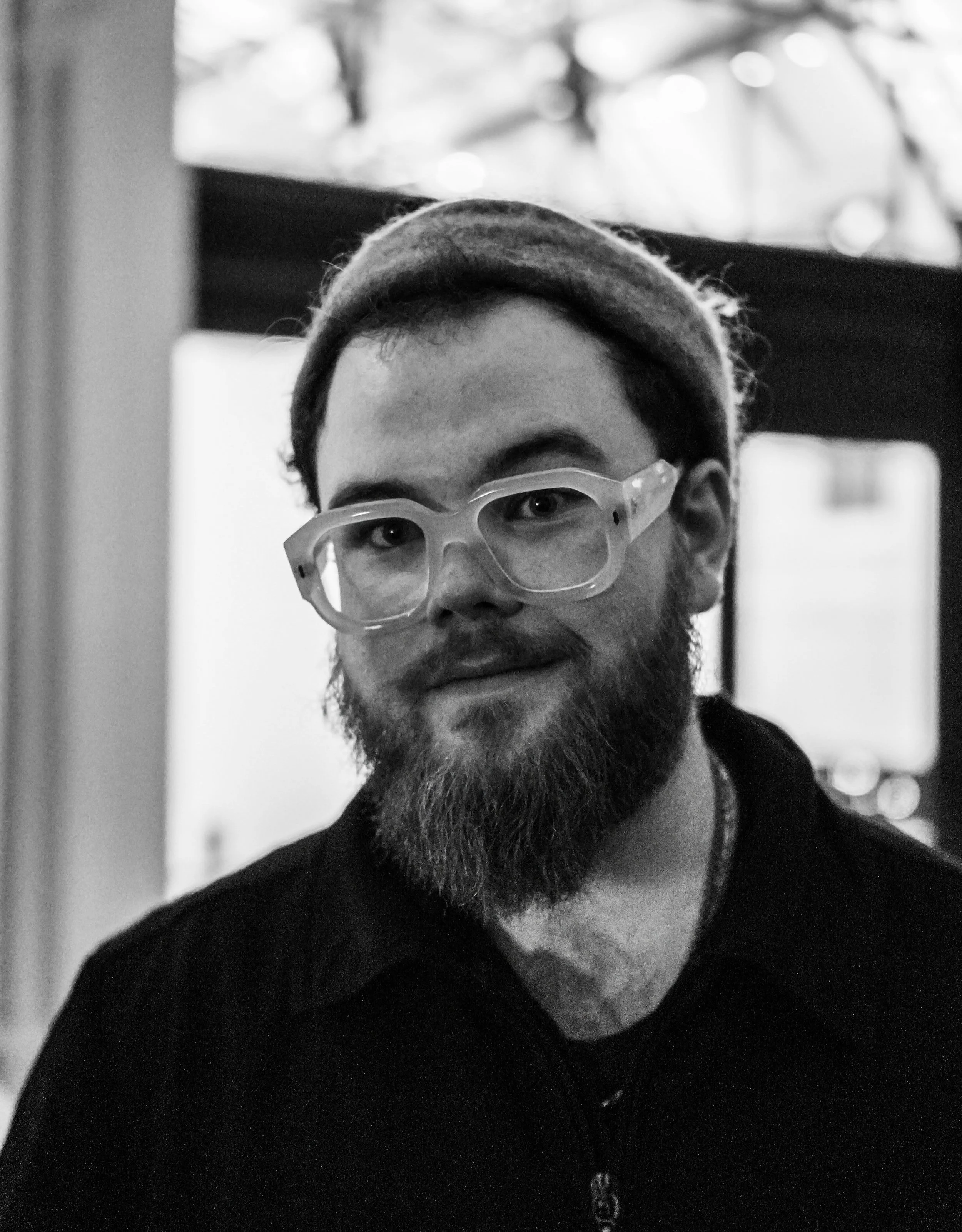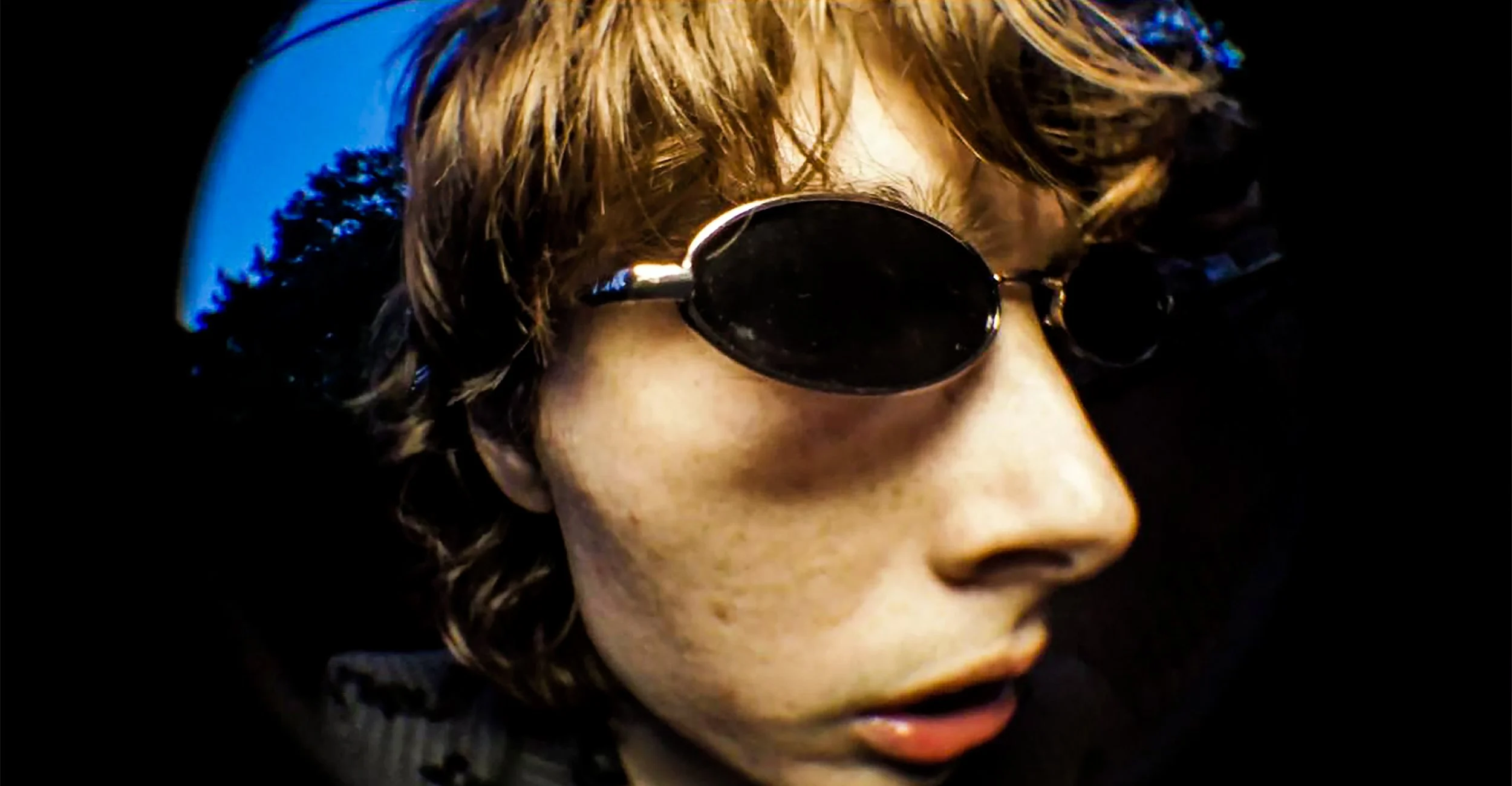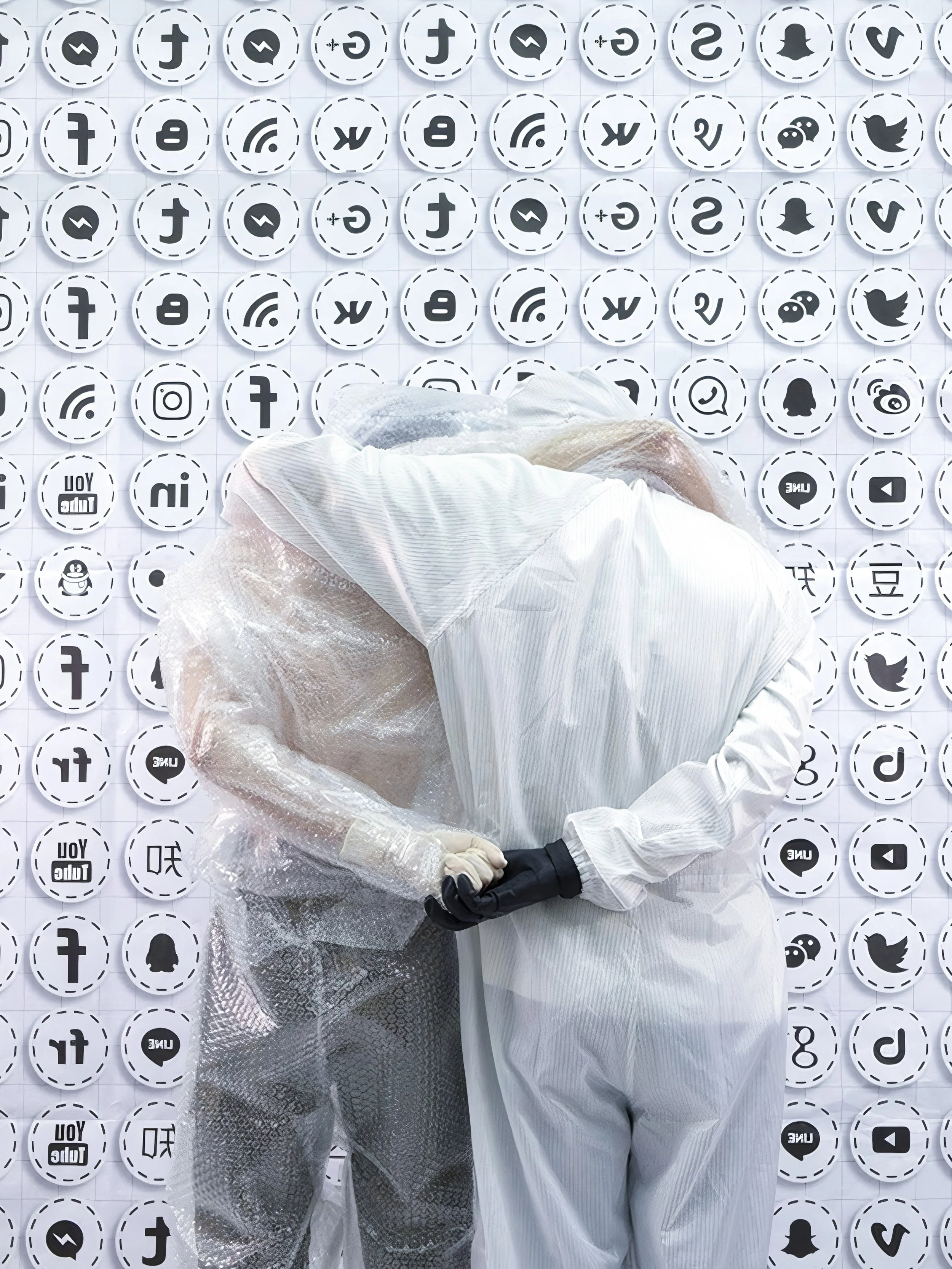10 Questions with Maxim Frumkin (Max Naum)
Maxim Frumkin (Max Naum) is an award-winning visual artist based in Canada, working across experimental video, art photography, and mixed media. His work has been exhibited internationally at venues including the Institute of Modern Art (Brisbane), Brooklyn Academy of Music (New York), No Gallery & Amanita (New York), etc. Notable projects include Yamashiro LIVE!, exploring shifting personas, and Coin Celleil, which reimagines memory as fragmented and looping. In 2024, Frumkin received the Best Art Video award from Pratt Institute’s School of Art Annual, recognising his innovative approach to moving image and identity. His work has been featured in publications such as Pretence, Ethic, and GAME ART, and he holds a BFA from Pratt Institute, with additional studies at Goldsmiths, University of London.
Maxim Frumkin (Max Naum) - Portrait
ARTIST STATEMENT
Maxim Frumkin’s practice investigates the fluidity of identity — how we perform, reshape, or resist ourselves to be seen, to belong, or to disappear. Working across moving images and photography, he creates flexible, unstable narratives where meaning loops, fragments, and contradicts, blurring the lines between memory, persona, and authenticity.
Yamashiro LIVE!, photo, 2023 © Maxim Frumkin (Max Naum)
INTERVIEW
Let's start from the basics. What first drew you to art, and how has your creative journey evolved over time?
I think the moment it all clicked was when I saw a René Magritte exhibition as a kid, I must've been nine or ten, visiting Chicago with my parents. Up until then, art had always seemed like something decorative or distant. But with Magritte, I realised that it could challenge how you see, twist your assumptions, pull the rug out from under what you think is stable, and make you feel and think again and again. That stuck with me since then.
Later on, I found the same feeling in other places, like watching Michael Haneke's Funny Games, especially the U.S. version. That story doesn't just disturb you, it directly confronts you, implicates you. There's this almost aggressive tension between artist and audience that fascinates me, and I think that friction is still present in my work today.
I can tell that as a teenager, I was more focused on building visual worlds, intricate sculptures and installations. I have invested all my effort and have tried to make my art look impeccable. But over time, especially after reading The Book of Five Rings, my approach shifted. I started thinking more about the energy inside of what I create, not just how it looks,but how it moves, pulses, and resists. So, these days, I am more interested in the complexity of underlying flows, tension, and rupture rather than just the visual aesthetics or pleasantness.
Can you tell us a bit about your background and how your studies at Pratt Institute and Goldsmiths shaped your artistic voice?
I'd say my studies, especially at Pratt, where I spent the majority of my higher education, were definitely formative but influenced my work more through life experiences around the school than the school itself. The COVID-19 pandemic hit in the middle of my first year, and that forced me to be in isolation a lot. While I met amazing professors and peers, most of what shaped me was simply pushing against the circumstances, dedicating time to personal projects and getting work done no matter what was happening around me.
Goldsmiths, on the other hand, gave me something very different. There, I could dive deeper into visual art theory, philosophy, and intellectual frameworks. It was more about thinking and was definitely a turning point for me because it supported what I was doing and helped me to grow as an artist. I started seeing my work in a broader way and connecting more with the fundamental ideas and conceptual and spiritual aspects behind it.
Yamashiro LIVE!, photo, 2023 © Maxim Frumkin (Max Naum)
Yamashiro LIVE!, photo, 2023 © Maxim Frumkin (Max Naum)
What first drew you to working with moving images and experimental video as a primary medium?
There's something about working with time that fascinates me. With moving images, I'm not just building visuals butrhythms, loops and interruptions. For me, it's closer to how memory works or how dreams unfold. Things repeat, shift, glitch. That space of uncertainty is where I feel inspiration.
Experimental video art also lets me break things apart. I'm not tied to linear storytelling or rigid form. I can layer textures, gestures, and voices and let them contradict each other. It gives me the freedom to work with ambiguity and to ask questions instead of answering them.
Your work often explores identity as something fluid and shifting. What sparked this interest for you?
I've never felt like I want or have to explore simple topics. I've always been aware of how much we change and how much we are being shaped depending on context, language, the place we were born and the space where we exist. How are we transformed by political, environmental, cultural, technological, ethical, humanitarian situations, etc.? I can go on and on. There's also this constant push and pull between how we see ourselves and how we're seen, what we are and who we are.
That friction became a key part of my work. I'm interested in the ways people perform and live, how we try things on, andhow we disappear into roles or escape them. There's something honest in showing that instability instead of hiding it. I think the self is porous, and that's where the work begins.
Yamashiro LIVE!, photo, 2023 © Maxim Frumkin (Max Naum)
How do you approach building the fragmented, looping narratives we often see in your projects?
I usually start with something small, a sentence, a sound, a visual glitch, then slowly unfold and build from that point. I collect pieces, layer them, and watch how they interact. My creative process is like sculpting with fragments, but it is related to the story I want to tell. I'm not aiming for a traditional arc, as I said. My work is about what is beyond surface appearances, where I explore hidden depths and contradictions.
This approach feels true to me. It somehow mirrors how we remember, how we obsess, how we get stuck. I want the audience to feel that not to follow a path but to circle around something that shifts and challenges them each time theypass through it.
Yamashiro LIVE! and Coin Celleil both engage with memory and persona. How did these projects come to life, and what do they mean to you personally?
It's quite a fulfilling story for me. Yamashiro LIVE! began with a simple but weirdly intense idea: what if someone was addicted to acting so much that they couldn't stop performing in real life? Again, it's all about my passion for defying and exploring identity in my art. Eventually, that experimental work was born from conversations with a friend I was collaborating with on another project at that time. I remember I was experimenting with multi-camera setups and improvisation then, influenced by video artists like Nam June Paik and the photographic visual style of Gregory Crewdson. I was also inspired by the chaotic, decontextualised world of social media, where identity is often shallowly performed and hyper-visible.
The result was this unstable portrait of a person constantly reinventing himself, trying to find a centre and failing. It felt urgent, raw, and personal, not because it was autobiographical but because it reflected things I think about often. Things like the tension between presence and performance, the fragmentation of self and the importance of talking about it in the context of art.
As for Coin Celleil, it came later and has a different tone. I'd say it is more poetic and haunted but still grounded in socially important themes. It's an omnibus video collage that explores materiality, nature, memory, and inherited trauma. In a way, it's a response to Sans Soleil by Chris Marker but twisted through a queer, contemporary lens. There's no moralising, no resolution, just this floating artist's statement, sensual exploration of civilisation, decay, and resilience.
Yamashiro LIVE!, photo, 2023 © Maxim Frumkin (Max Naum)
Yamashiro LIVE!, photo, 2023 © Maxim Frumkin (Max Naum)
What role does contradiction or ambiguity play in your visual storytelling?
I would say one of the central ones. And it's not just a theme, trick, or manipulation; it's a method I developed through my career and decided to stick to. I believe that ambiguity creates space for my audience to think, feel, get a little lost, andcome up with new meanings. When things are too clean or too clear, it shuts down the element of improvisation and connection between the artist and the observer. So, once again, I'm much more interested in contradiction, in letting things exist in tension; that's where the interesting and unpredictable things happen. Always.
Receiving the Best Art Video award from Pratt's School of Art must have been a meaningful recognition. How did it influence your perspective moving forward?
It meant a lot, to be honest, mainly because the work was deeply personal and intentionally not polished or traditional. To have that kind of piece recognised gave me a sense of freedom and confidence. I came to understand that I could continue trusting my instincts and follow challenging ideas while still connecting with people. It also helped me keep making work that feels honest and brought some recognition in the art community, which is also important.
What ideas or formats are you excited to explore next? Any upcoming projects or shifts in your practice you can share?
One of the projects I'm currently working on is another experimental video piece called Lung Fucker. It looks into the world of online capnolagnia or smoke fetish communities, not from a voyeuristic angle, but to explore the psychology behind ritual, self-destruction, and spectatorship. The other day, I came across an interesting character named Dave. He documents his own physical decline through extreme smoking. What struck me wasn't his commitment to this fetish but how viewers were drawn to Dave's slow physical deterioration. The project focused on research and conversations with people in the community, exploring their mindset and the darker side of watching, as well as digital intimacy and the consequences of the chosen lifestyle.
Yamashiro LIVE!, photo, 2023 © Maxim Frumkin (Max Naum)
And lastly, where do you see yourself and your work in five years from now?
If, five years from now, I'm still making things that challenge me and confuse me a little, I'll consider that a success. Hopefully, I will still explore and find new ways to ask questions. I'd like to make more large-scale, long-term projects, collaborating with people across disciplines and creating environments where the process itself becomes visible, maybe even part of the audience's experience.
I'd say I want to push myself further in the direction of undertaking more complex, interesting, and transformative areas of research and creation and finding ways to set up unusual circumstances for my art projects' realisation.
A Review of Maxim Frumkin's Work
By Mohamed Benhadj, Curator and Al-Tiba9 Gallery Founder
Maxim Frumkin (also known as Max Naum) is a visual and mixed-media artist who embraces confusion, contradiction, and change. His work, mostly in experimental video and photography, explores how people perform, and sometimes lose their identities. Frumkin isn't interested in making neat or polished stories. Instead, he demonstrates how unstable and layered our sense of self can be, particularly in a world shaped by technology and social media, and most of the time, by the constant pressure to be seen.
In "Yamashiro LIVE!", one of his most powerful pieces, we encounter a character who appears to be constantly changing roles and searching for meaning. The camera work contributes to this feeling: sometimes it gets too close, almost uncomfortably so; at other times, everything is a blur. These choices aren't just about style. They reflect how it feels to live in a world where performance can become a way of life, and where the line between reality and illusion is always shifting.
Frumkin prefers to ask questions and leave space for doubt. His images feel broken, and often looped, as if we're stuck in a memory that keeps coming back in a different form each time. This gives his videos a strange rhythm like a dream or a thought that won't go away.
In "Coin Celleil", another video project, Frumkin brings together different scenes and voices to reflect on memory, nature, and personal history. There's a quiet sadness to the work, but also beauty. The way he puts images and sounds together feels both delicate and thoughtful. Inspired by Chris Marker's Sans Soleil, the project doesn't explain its ideas directly, but invites us to think and feel our way through them.
Visually, Frumkin draws on a range of sources, from the detailed scenes of Gregory Crewdson to the experimental style of Nam June Paik. Yet his work never feels like a copy. He builds his own world, characterised by strange lighting and characters that are hard to define. These choices make his work feel personal, yet open to many meanings.
Some viewers may find Frumkin's art challenging. His use of repetition and unclear stories is not always easy to follow. But this is also what makes his work important. He encourages us to look more closely, and to accept that some things don't have simple explanations.
Maxim Frumkin is part of a new generation of artists who use video not just to show the world, but to question how we perceive ourselves within it. His art reminds us that identity is not fixed but shifts and rebuilds over time. Additionally, as an art professional who also relates closely to performance art, I deeply value the way Frumkin works with presence and constant transformation. His videos address the same questions that drive my own curatorial practice about who we are and what it means to perform the self.
Artist’s Talk
Al-Tiba9 Interviews is a promotional platform for artists to articulate their vision and engage them with our diverse readership through a published art dialogue. The artists are interviewed by Mohamed Benhadj, the founder & curator of Al-Tiba9, to highlight their artistic careers and introduce them to the international contemporary art scene across our vast network of museums, galleries, art professionals, art dealers, collectors, and art lovers across the globe.






















